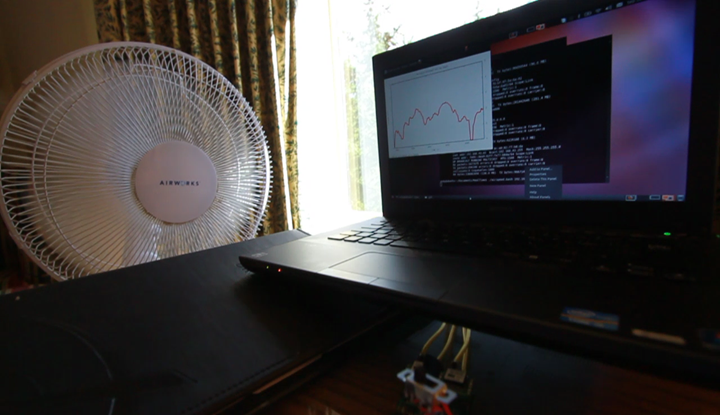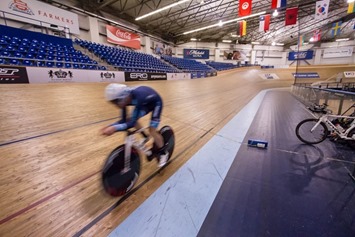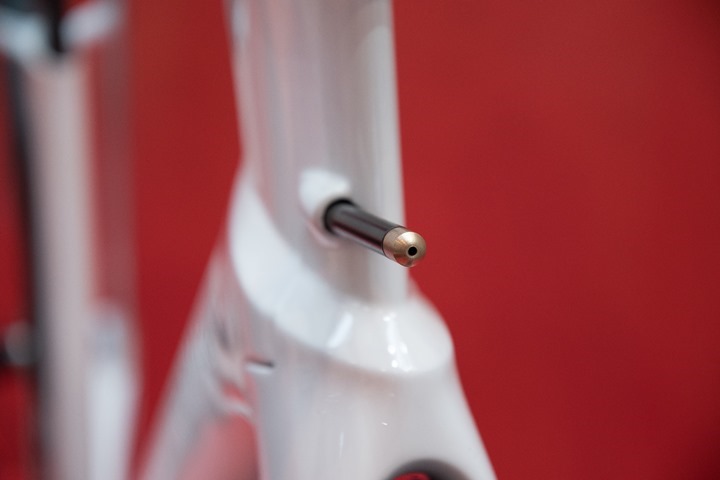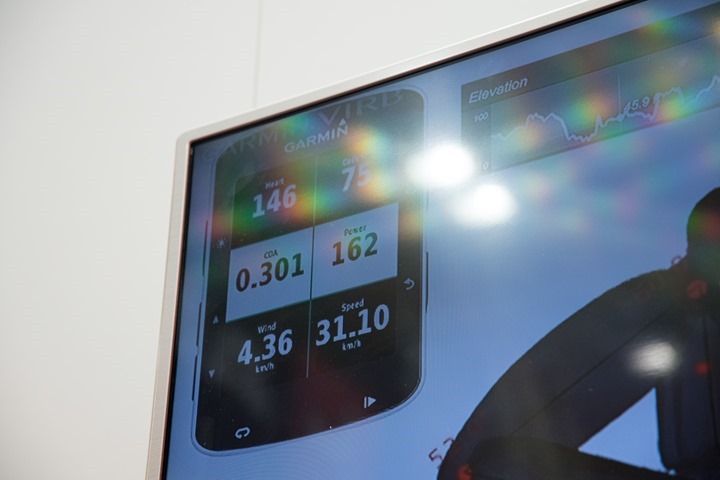Last call for sports tech deals before New Year!! Most of these are still live till Dec 31st. The Garmin Fenix 8 is $250 off to $749, (even the Fenix 8 Pro is $100 off!), the Garmin Edge 850 is $110 off, Apple Watch Ultra 3 is on sale, the Garmin inReach Mini 2 is $249, the GoPro Hero 13 Black, DJI NEO, and a ton of other brands/deals, including Wahoo, Oura, Whoop, Polar, Samsung, Google, and more than 100 sports tech deals here!
I’m DC RAINMAKER…

I swim, bike and run. Then, I come here and write about my adventures. It’s as simple as that. Most of the time. If you’re new around these parts, here’s the long version of my story.

You'll support the site, and get ad-free DCR! Plus, you'll be more awesome. Click above for all the details. Oh, and you can sign-up for the newsletter here!
Here’s how to save!
Wanna save some cash and support the site? These companies help support the site! With Backcountry.com or Competitive Cyclist with either the coupon code DCRAINMAKER for first time users saving 15% on applicable products.
You can also pick-up tons of gear at REI via these links, which is a long-time supporter as well:Alternatively, for everything else on the planet, simply buy your goods from Amazon via the link below and I get a tiny bit back as an Amazon Associate. No cost to you, easy as pie!
You can use the above link for any Amazon country and it (should) automatically redirect to your local Amazon site.
While I don't partner with many companies, there's a few that I love, and support the site. Full details!

Want to compare the features of each product, down to the nitty-gritty? No problem, the product comparison data is constantly updated with new products and new features added to old products!

Wanna create comparison chart graphs just like I do for GPS, heart rate, power meters and more? No problem, here's the platform I use - you can too!

Think my written reviews are deep? You should check out my videos. I take things to a whole new level of interactive depth!

Smart Trainers Buyers Guide: Looking at a smart trainer this winter? I cover all the units to buy (and avoid) for indoor training. The good, the bad, and the ugly.
-
Check out my weekly podcast - with DesFit, which is packed with both gadget and non-gadget goodness!

Get all your awesome DC Rainmaker gear here!
FAQ’s
I have built an extensive list of my most frequently asked questions. Below are the most popular.
- Do you have a privacy policy posted?
- Why haven’t you yet released a review for XYZ product you mentioned months ago?
- Will you test our product before release?
- Are you willing to review or test beta products?
- Which trainer should I buy?
- Which GPS watch should I buy?
- I’m headed to Paris – what do you recommend for training or sightseeing?
- I’m headed to Washington DC – what do you recommend for training?
- I’m from out of the country and will be visiting the US, what’s the best triathlon shop in city XYZ?
- What kind of camera do you use?
-
5 Easy Steps To The Site
In Depth Product Reviews
You probably stumbled upon here looking for a review of a sports gadget. If you’re trying to decide which unit to buy – check out my in-depth reviews section. Some reviews are over 60 pages long when printed out, with hundreds of photos! I aim to leave no stone unturned.
Read My Sports Gadget Recommendations.
Here’s my most recent GPS watch guide here, and cycling GPS computers here. Plus there are smart trainers here, all in these guides cover almost every category of sports gadgets out there. Looking for the equipment I use day-to-day? I also just put together my complete ‘Gear I Use’ equipment list, from swim to bike to run and everything in between (plus a few extra things). And to compliment that, here’s The Girl’s (my wife’s) list. Enjoy, and thanks for stopping by!
Have some fun in the travel section.
I travel a fair bit, both for work and for fun. Here’s a bunch of random trip reports and daily trip-logs that I’ve put together and posted. I’ve sorted it all by world geography, in an attempt to make it easy to figure out where I’ve been.
My Photography Gear: The Cameras/Drones/Action Cams I Use Daily
The most common question I receive outside of the “what’s the best GPS watch for me” variant, are photography-esq based. So in efforts to combat the amount of emails I need to sort through on a daily basis, I’ve complied this “My Photography Gear” post for your curious minds (including drones & action cams!)! It’s a nice break from the day-to-day sports-tech talk, and I hope you get something out of it!
The Swim/Bike/Run Gear I Use List
Many readers stumble into my website in search of information on the latest and greatest sports tech products. But at the end of the day, you might just be wondering “What does Ray use when not testing new products?”. So here is the most up to date list of products I like and fit the bill for me and my training needs best! DC Rainmaker 2024 swim, bike, run, and general gear list. But wait, are you a female and feel like these things might not apply to you? If that’s the case (but certainly not saying my choices aren’t good for women), and you just want to see a different gear junkies “picks”, check out The Girl’s Gear Guide too.





























So that is where the pitot tube from my airplane went.
Yepp.
No, I actually stole it. I’m still waiting for my airplane flight. I’ll give it back when I get my flight.
I can see use cases for other industries that Garmin supports–aviation and water navigation especially. Maybe sell sensors to place along golf course fairways that tie to your Garmin device to provide real time wind data to plan your club/shot. A good move.
Not sure the tech will help this old man triathlete be any faster, but like a lot of stuff I will buy it and try it out just because I like geek.
That is something, at the right price, I’d buy today
Real-time CDA, yes please.
Real-time feedback on position would make some nice gains possible.
I will probably waste my money on something like this when a good product comes out.
I keep meaning to go do some tests with my old Samsung phone and the app “Bike Cdacdrr ” but I’m still looking for a convenient loop without stop-signs or traffic. It looks pretty cool and there’s a Slowtwitch post for discussion that hasn’t seen much love lately.
link to forum.slowtwitch.com
This alphamantis/garmin concoction reminds me a bit of the SkippyKitten project.
http://skippykitten.tumblr.com
Yup indeed!
I thought of trying to tie that into this post as well, but I was already running a bit behind for a dinner reservation with the family…so had to cut my loses. :(
Very interesting development and I wonder to what extent Garmin will go further with acquiring or continue to develop sensors to measure ( mechanical / physiological, etc) feedback. If price is right I would buy one
I read this whole thing, and I don’t have any real idea what this sensor does. What exactly does it measure and what do you do with it? It tells you how aero your position is? How? Is the idea that you compare power and speed (which you presumably already have) and then control for wind?
It’s essentially measuring wind speed, which when referenced against known ground speed can determine what changes in position or gear are doing to your aerodynamics. When combined with a power meter, you can determine whether or not that decrease in drag was due to something you did that changed aerodynamic properties, or just because you tweaked your power output.
Wind speed yes, more importantly it measures yaw. That’s what makes it so interesting.. Here are the Alphamantis boys in very early testing in my apartment using my (now ex girlfriend’s) hair dryer link to vimeo.com The hair dryer didn’t make it through the entire test.. ;-)
Hmmm…imagine crashing and having that probe thing spear into you! Makes disc brakes look pretty benign.
Unrelated and random – Ray: at least once every other month I try to wipe away the dirt on my screen before realizing it’s just your website’s background!
I may or may not be guilty of that as well…
Was just googling to find out what happened to the aerostick the other day! Hoping this lights a fire under PowerPod – been requesting a connectIQ field for live CdA numbers for a while with no real response. IME the unit is simply too fiddly and unreliable to live with day to day but I think there’s a big market as an aero optimisation tool, especially for the large and generally technically aware TT and triathlon population.
I’m not sure that I want to quantify how NOT aero I am.
I’d like to measure the aero gains from drinking only protein shakes for week. In fact, ill ditch the scale entirely and qualify my physique by coefficient of drag.
Pitot tube, heads up display, radar. All haft is left for Garmin to make a bike into an airplane is the wings – next acquisition? But to your point, Garmin brings those earlier acquisitions to simple to use and solid products.
When paired with a crank. pedal or hub based power meter, the Newton6 power meter (same guts as power pod but unsophisticated LCD display) has had real time CdA for years.
Might be too late now for power pod though, since if Garmin owns alphamantis, is it in their interest to allow a realtime CdA field to be implemented in ant+?
John Hamann?
I don’t think it’s too late at all for PowerPod.
I figure they’ve got about a 6-9 month jump start, and like at half the cost advantage. It’s really about marketing and timing. If they (PowerPod) go into August with Eurobike and such and have a proper marketing/etc plan around what it can do, with Connect IQ apps for both Edge and watches (tri focused), and the right price point (I think $200 is perfect), then they have a very good chance of winning the battle for quite some time.
Yeah, I don’t think Garmin can prevent them from doing a real time CiQ app without destroying CiQ. All PowerPod needs is the power from a DFPM, which is available to CiQ apps already I think, and they measure everything else they need. And they can always do things after the fact in Isaac by picking up the ANT+ signal from a DFPM on the PowerPod itself. What PowerPod can’t do but conceivably what Garmin can is to build this sensor into an Edge (looks a little long now, though). Then you have an Edge with a built air speed sensor which in combination with a speed sensor can do what the PowerPod does, and in combination with a DFPM can do real time CdA internally. And as a bonus you know how bad that awful head wind was (something I look at with my PowerPod already) :-)
We are delighted about the Garmin acquisition, because it will create more interest in aerodynamic measurements.
But we’re not hyperventilating about the announcement. Sticking a pitot tube in front of a bike looks cool, but getting useful/reliable information out of it is another thing.
Remember when Garmin acquired Metrigear? It took them over 3 years to get Vector to market. We will see how long this takes.
In the mean time, we have 13 years of experience in deploying wind sensors in bicycle applications, and it was 10 years ago that we first introduced CdA measurement.
We have learned a lot and are doing some cool things of our own right now; stay tuned!
Exciting stuff! Whatever product they are cooking, I hope they can bring it to market as quick as they did with the Varia Radar.
“Aerodynamic sensor”, looks a lot like a kiel probe to me. Like they use in formula 1, to measure airflow round a car: link to youtube.com
I know Andy still has a Garmin email address, but has ANYONE heard anything about Garmin’s aero sensor since… what, 2020? 2021? I know there was an unplanned public showing of a garmin web page that quickly went down, but I can’t get my sources at Garmin to provide anything.
Ironically, Mark Ersting has been getting great reviews on the Gibli.